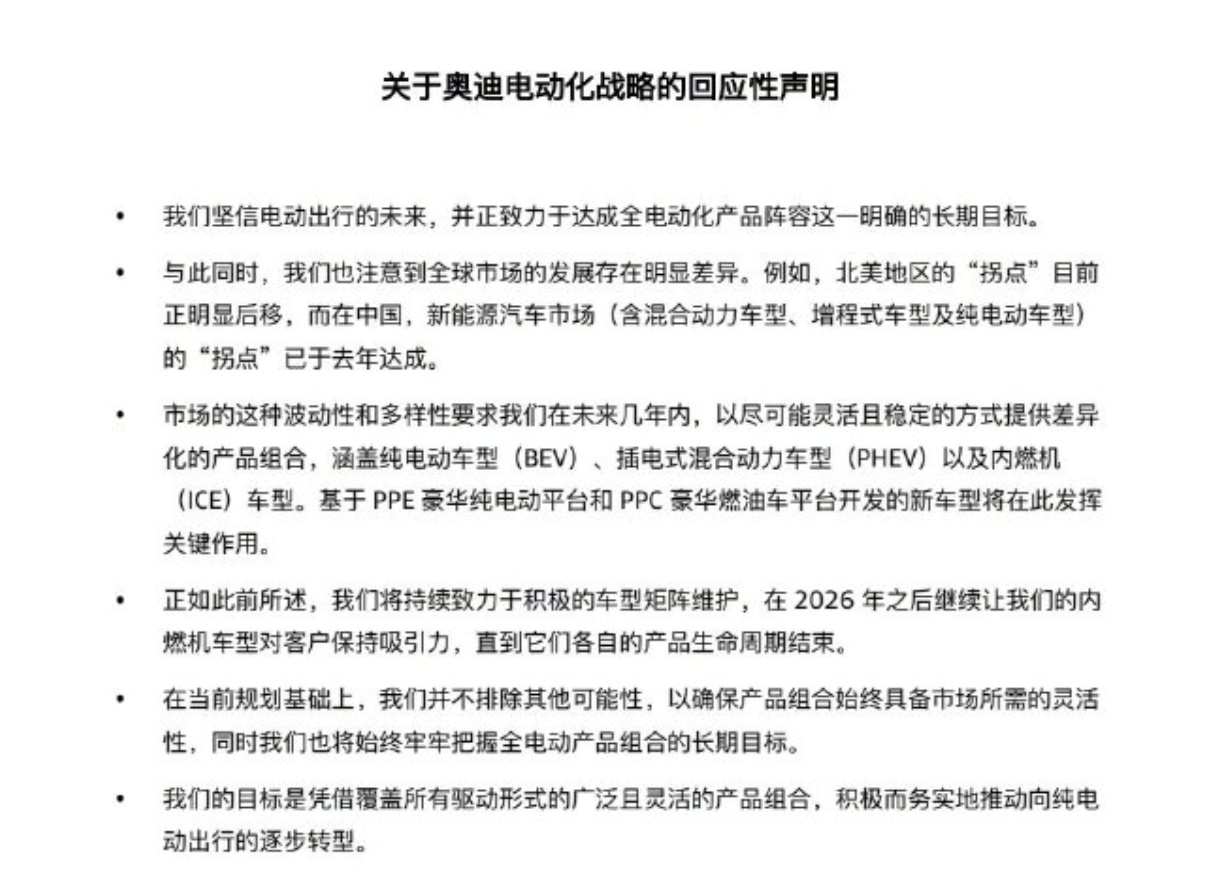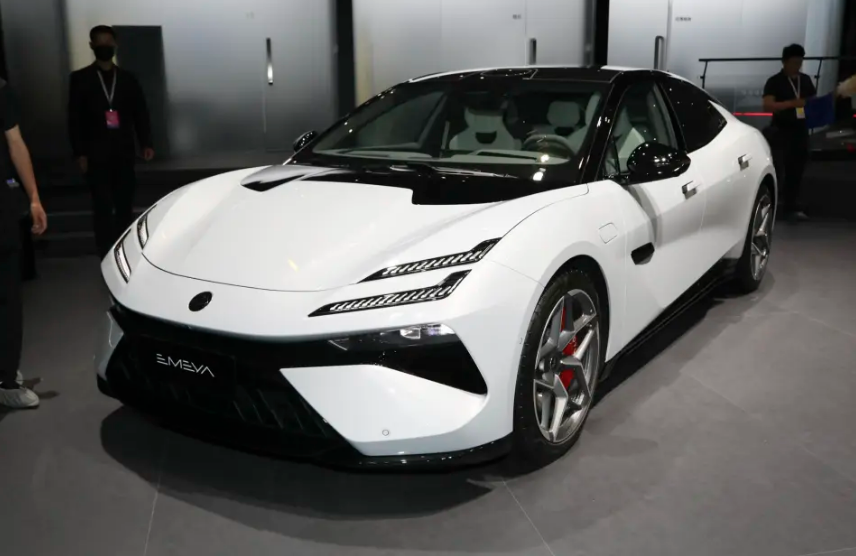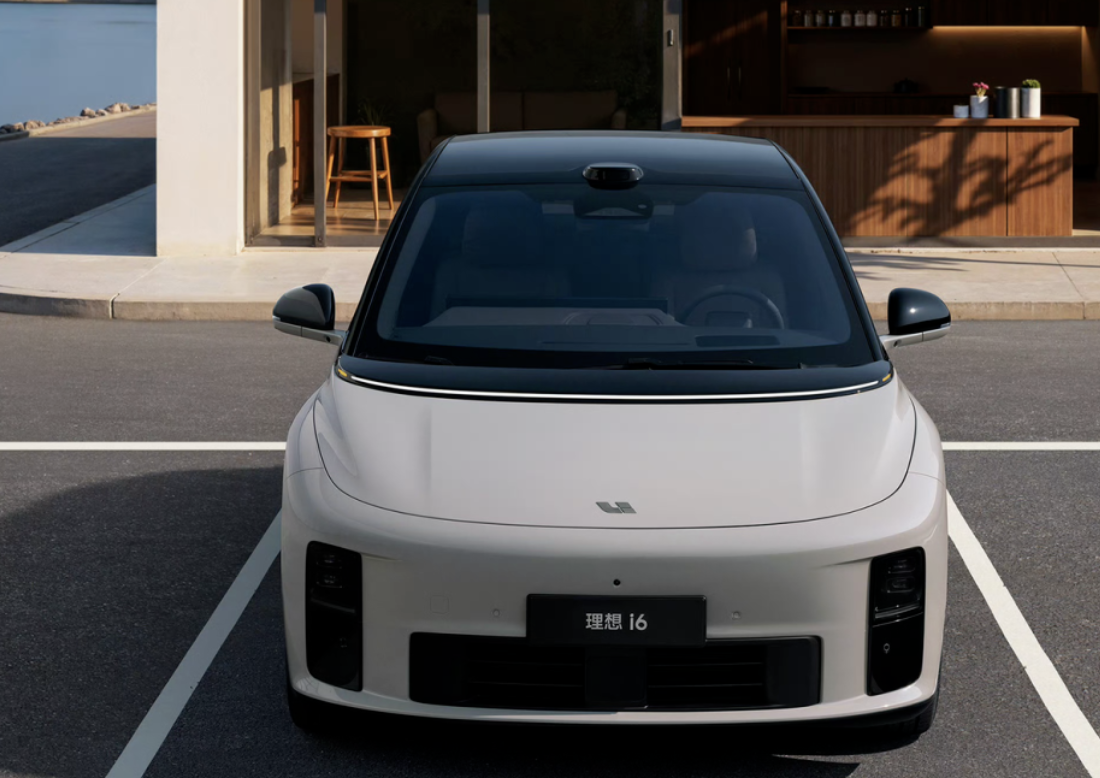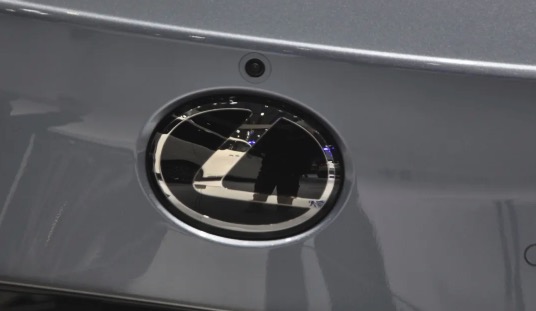On June 18, reports emerged that German automaker Audi had adjusted its long-term strategy, abandoning its previous plan to become fully electric by 2033 and confirming that it would continue producing internal combustion engine (ICE) vehicles for at least the next decade. In response, Audi released an official statement titled “Audi’s Response on the Electrification Strategy.”
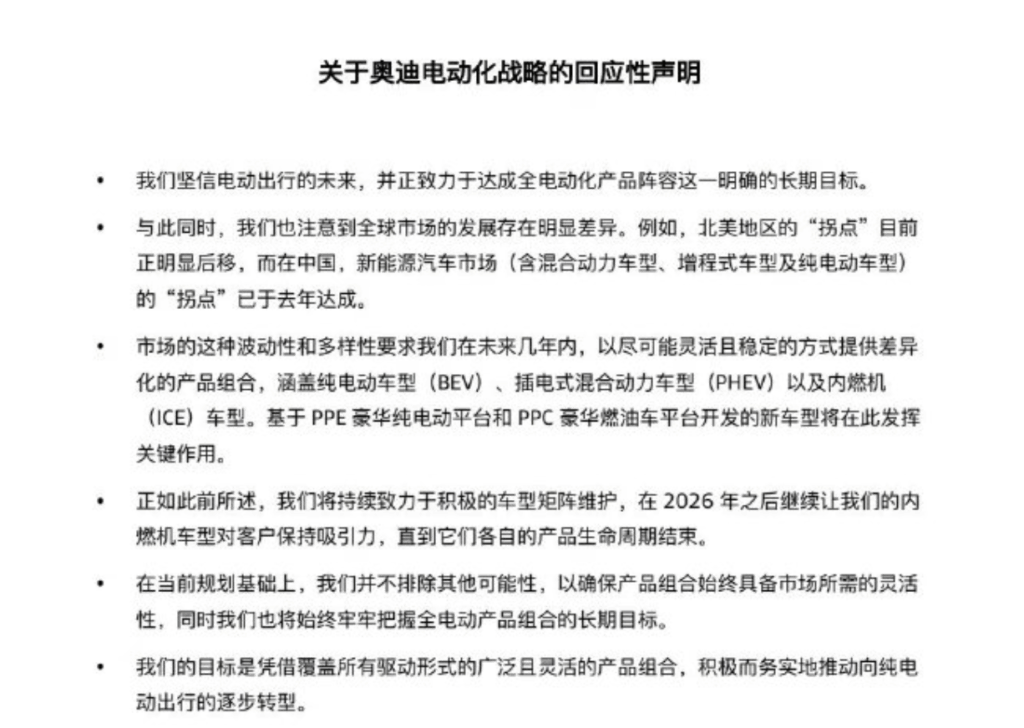
In the statement, Audi reaffirmed its strong belief in an all-electric future and reiterated its clear long-term goal of transitioning to a fully electric product lineup. However, the company acknowledged that the pace of transformation varies significantly across global markets. For example, while the “tipping point” for electric mobility in China (including BEVs, PHEVs, and EREVs) has already been reached as of last year, in North America that tipping point is still being delayed.
According to multiple media outlets, Audi has rescinded its plan to cease ICE production by 2033, and no longer sets a firm timeline for phasing out combustion engines. Production could now extend to around 2035 or beyond, depending on customer demand and market development. Audi CEO Gernot Döllner explained: “Between 2024 and 2026, Audi will launch an entirely new range of combustion and plug-in hybrid models. This will provide us with greater flexibility over the next decade, after which we will reassess market trends.” Previously, Audi had aimed to stop selling ICE cars by 2026 and end production altogether by 2033.
The move has attracted wide attention in the industry, especially given the global auto sector’s accelerated shift toward electrification. Audi is not the only carmaker revising its plans—Mercedes-Benz, Volvo, and others have also scaled back their timelines for full electrification. For Audi, this adjustment reflects a pragmatic response to its brand strategy and market realities.
In its statement, Audi emphasized: “Market volatility and diversity require us to offer a differentiated product portfolio in the coming years—covering BEVs, PHEVs, and ICE models—in the most flexible and stable way possible. New models developed on the PPE luxury EV platform and the PPC luxury combustion platform will play a key role. We remain committed to keeping our ICE models attractive for customers even beyond 2026, until their respective life cycles conclude. Based on current planning, we do not rule out other possibilities to maintain the flexibility our product mix needs. At the same time, we remain firmly committed to our long-term goal of a fully electric portfolio.”
Audi further stressed its aim to “drive the transition toward electric mobility actively and pragmatically, with a broad and flexible product lineup covering all drivetrain types.”
Financial and Sales Performance
Audi’s latest earnings report shows that in Q1 2025, operating revenue reached €15.431 billion, up 12.4% year-on-year. Operating profit rose 15.2% to €537 million, with an operating margin of 3.5% (vs. 3.4% a year earlier). While Audi maintained its full-year guidance—forecasting €67.5–72.5 billion in revenue with a 7–9% margin—the targets remain challenging.
On sales, Audi delivered 388,800 vehicles globally in Q1, down 12.4% year-on-year. Deliveries of fully electric models grew 30% to 46,000 units, accounting for 11.9% of total sales. However, for the full year 2024, Audi’s global deliveries fell 11.8% to 1,671,218 units, with EV deliveries down 8%.
